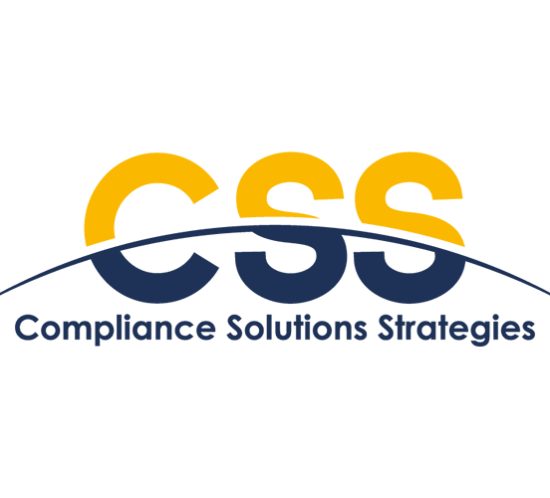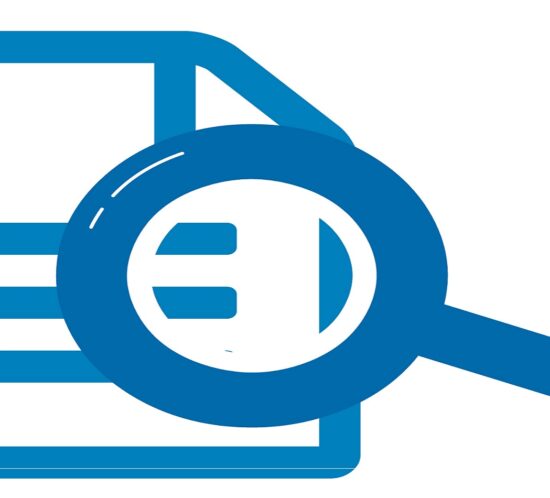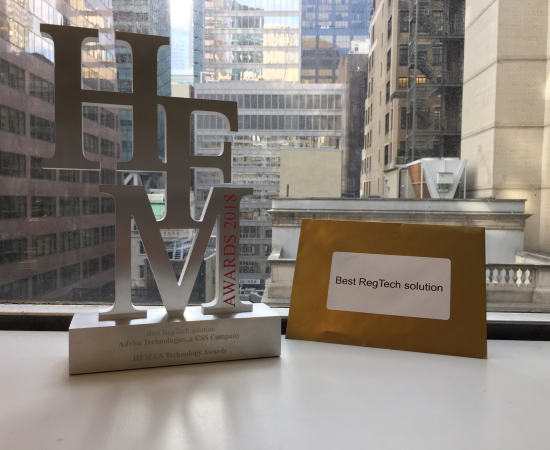Fifth Circuit Weighs In on DOL Fiduciary Rule
A panel of the U.S. Court of Appeals for the Fifth Circuit has vacated the Department of Labor’s Fiduciary Rule. In a 2-1 split, the Fifth Circuit’s decision overrules a Dallas District Court’s decision, which had previously upheld the rule.
Unfortunately, the decision does little to settle the fate of the beleaguered rule. Although it is binding on the Fifth Circuit, which is comprised of Texas, Louisiana and Mississippi, it is merely persuasive on the other circuits or until the Supreme Court weighs in. There’s also a chance that the Fifth Circuit will be asked to rehear the case en banc.
The lawsuit was originally brought by industry groups opposed to the rule, such as the U.S. Chamber of Commerce and the Securities Industry and Financial Markets Association. After failing to win at the district court level, the plaintiffs appealed to the Circuit court. The Fifth Circuit panel held, among other things, that the Department of Labor’s expansion of the applicability of the term “fiduciary” went beyond the Department’s authority.
We recall last decade when the SEC attempted to change the application of the word “client” to include private fund investors. In the Goldstein v. SEC decision, the U.S. Court of Appeals for the D.C. Circuit ruled that the SEC had exceed its authority in an attempt to require hedge fund managers to register. In the end, it took an act of Congress, also known as Dodd-Frank, to require private fund advisers to register, and expanded registration to private equity and other fund managers.
Between the Goldstein decision and Dodd-Frank, many registered managers did not de-register because the industry had come to expect money to be managed by the standards expressed by the SEC. Once the genie is out of the bottle, things change. Certainly, some of the concepts of the DOL Fiduciary Rule will remain with us in our compliance efforts to protect investors. Fortunately, we work with managers who value running strong businesses and we help them appropriately navigate these changing conditions without undue burden.
So what does all of this mean for you? At the moment – not much. You should continue preparing for the Fiduciary Rule’s full implementation while continuing to monitor the Rule’s status.
SEC Proposes Amending Investment Company Liquidity Disclosures in Forms N-PORT and N-1A
On March 14, 2018, the Securities and Exchange Commission (“SEC”) proposed amendments to the mutual fund liquidity-related disclosure requirements.
Specifically, the proposal:
- Adds a new requirement to “briefly discuss the operation and effectiveness of the Fund’s liquidity risk management program during the most recently completed fiscal year” in the Fund’s Management Discussion of Fund Performance (“MDFP”) as part of its annual shareholder report. This discussion would replace the Form N-PORT requirement to report aggregate liquidity classification information (i.e. the totals in each liquidity bucket) which is released to the public the third month of each quarter.In considering these changes from Form N-PORT to the shareholder annual report, the SEC is responding to public comments in which concerns were raised that disclosing liquidity risk information in Form N-PORT would confuse investors because of the subjectivity of the classification process, the lack of context surrounding the classification process and that such disclosure highlights liquidity risk in isolation from other risks.
- Amends form N-PORT to allow a single security to be classified in more than one liquidity bucket. This is especially useful for funds in which different subadvisers may reach different liquidity conclusions with respect to a security. The flexibility also gives funds additional options for classifying securities across buckets to reflect variances in liquidity based on the size of a particular holding (the “proportionality approach”). The SEC recently published FAQs permitting funds to classify a security in more than one bucket, but the fund could only report one bucket in Form N-PORT. Now, the fund can follow the bucketing of its liquidity risk management program.
- Adds a new requirement to Form N-PORT for a fund to report its holdings of cash and cash equivalents. Under the current requirements, cash and cash equivalents are included in the aggregate liquidity classification that the proposal would eliminate. By requiring the reporting of cash and cash equivalents, Form N-PORT would then have a complete accounting of a fund’s holdings.
In our view, these proposed changes will provide funds with additional flexibility to more accurately classify the liquidity of specific holdings and provide for a more meaningful discussion of a fund’s liquidity risk. By moving to a narrative discussion in the annual shareholder report, the goal of improving information disclosure regarding a fund’s liquidity risk profile can be more effectively met, while ensuring that liquidity risks are discussed in the appropriate context of other fund risks. Further, the annual shareholder report is an existing communication currently available to all shareholders.
There is a 60-day comment period before the proposal appears before the Commission for a final vote. We will keep you posted as developments unfold.
NOTE: This post was originally published on Ascendant’s parent company site, Compliance Solutions Strategies. CSS is a global RegTech platform delivering a set of comprehensive and complementary technology-enabled regulatory solutions that serve compliance professionals across the financial services industry. For more information, visit ComplianceSolutionsStrategies.com.
Paradigm Shift in SEC Exams, Benefits of a Mock Exam
For investment advisers currently going through an SEC exam, the process likely bears little resemblance to exams of old. Call it the new normal, a paradigm shift, or simply the effects of the SEC having to do more with less, but anecdotal evidence among those now experiencing the exam process suggests some interesting new trends.
What has changed about SEC exams? First, the concept of routine exams seems to have fallen by the wayside, replaced with targeted, risk-based exams. The risks may be specific to a given firm, or may be part of risk-based sweep exams to help the regulator assess the prevalence of certain practices and the extent of controls around certain focus areas.
The targeted exams are evident in the significantly reduced size of the initial request list being received by investment advisers. Firms are reporting initial requests of as a few as a dozen items. Other advisers are sharing that the SEC requests an initial “get-to-know-you” phone call but never comes on-site at all, choosing instead to conduct the entire exam remotely. Still others are reporting that the SEC did come on-site, but only for the purpose of attending the initial presentation they request about the firm, its business model, its risks and controls.
What else seems to have changed with SEC exams? They are actually being completed quickly—in some cases in as little as three months—according to several hedge fund advisers who have recently gone through the process.
Last week, I had the opportunity to hear tales from the front lines from the legal and compliance teams representing firms that had recently gone through an SEC exam, and several shared that they felt prepared for their exams because they engage compliance consultants to conduct mock exams several times per year on a variety of focused topics, such as expense allocation or trading practices. One adviser shared that the benefit of having a third-party mock SEC exam is that the consultant has a breadth of experience among numerous firms going through exams and can leverage actual SEC request lists and questions to help prepare their team by testing the ability to gather and produce requested information in a timely manner, and by testing the preparedness of their personnel to handle a regulatory interview. Another adviser added that it is important for the chief compliance officer to be in the hot seat for a mock exam interview as well. Mock SEC exams offer the opportunity for an independent look at how staff responds to questions, and can reveal valuable insights such as who may be able to handle the pressure in front of a real regulator and who should perhaps be encouraged to take a vacation that week because the interviewee over-volunteered information or was wholly inaccurate.
I also had the opportunity to join an FBI Agent from the Financial Cyber Crimes Task Force to speak to hedge fund advisers on the topic of big data as it relates to cybersecurity. Hedge fund advisers in particular are generally very protective of their “secret sauce,” and it was interesting to hear how many firms were storing data in the cloud versus on premises. The scales have clearly tilted towards the use of the cloud, and especially a private cloud solution, although many in the audience agreed that they migrated to the cloud in stages one system at a time.
Whether using the cloud or not, my co-panelist and I stressed the importance of data classification, of understanding what your organization’s crown jewels are and protecting those assets accordingly. Once hackers have gained access, log files tend to show that the hackers try to move laterally within the firm to try to access other systems, files, and information. It may not be readily apparent to an adviser what information may be valuable to the hacker, because it may differ from what the adviser considers to be its crown jewels. And since many cyber intrusions are not detected for 6-9 months after the fact, it is important for firms to maintain log files they can review to determine what a hacker accessed.
Finally, the FBI was in agreement that social engineering continues to be the biggest risk facing the financial sector. As merger-and-acquisition activity picks up in the financial space, it can be very easy for a firm with strong controls on all of its systems to suddenly have a number of new and potentially unsecure systems added to the mix. Cyber crime tends to be a crime of opportunity. A hacker only needs one way in, whether it’s through an unpatched system or a phishing attempt to be let right in the front door.
Want to make sure your firm is exam-ready? Ascendant can help. Our mock exams consist of interviews; document review; data inspection; compliance testing; and evaluation of policies and procedures; and are designed not only to highlight weaknesses but also to assist with enhancing compliance programs to ensure consistency with the SEC’s expectations. For more information, contact us today via email or at 860-435-2255.
Why Should a Big Hedge Fund Use a Compliance Consultant?
If your firm isn’t already using an outside consultant, you may want to ask yourself “why not?” Oftentimes at hedge funds, compliance officers struggle to successfully fulfill the requirements of the job without an essential tool in their toolbox: the outside compliance consultant. Why? The primary reason is simple: resources. When your head is down and you are doing your job on a day-to-day basis, it is very difficult – practically impossible – to stay up to date with regulatory developments, and perhaps more importantly, business best practices.
Time is Money …
All of us have limited resources in terms of time. In a nutshell, the outside compliance consultant has their ear to the ground on a full-time basis. It is his or her job to be aware of the latest regulatory developments while an in-house person focuses on the day-to-day challenges of their firm’s business. An outside compliance consultant also has the advantage of insight into how a range of firms, often a large segment of the market of peers and competitors, implement best practices. Even finding the time to attend an industry conference can be a challenge. For every in-house counsel or compliance officer that finds the time to attend, there are dozens more who may not be able to break away from their offices. The outside compliance consultant can fill in the blanks for those who cannot make it themselves, and offer help by filling in knowledge gaps. In effect, it’s almost like being in two places at once.
The second reason is efficiency. How many times have you needed to find a template for a new policy required to adapt to a change to your business activity? Or maybe you need to know the industry best practice for mitigating a specific conflict of interest that’s arisen. Rather than trying to Google the right answer or attempting to guess which of your peers might have had a similar experience, outside compliance consultants have collective knowledge within their firm. You’ll find the speediness of a response to your issue invaluable.
If you run a cost-benefit analysis for your own firm, it’s hard not to see that it is absolutely worth engaging an outside compliance consultant on an annual basis for these reasons alone. But an additional reason is to handle one-off projects or conduct ongoing regular compliance testing that your in-house staff doesn’t have the bandwidth to complete. Without an outside compliance consultant, you may find that certain projects are constantly “back-burnered.” Using a compliance consultant to supplement your full-time staff can help your firm to clear out the backlog of compliance projects that you need to get done.
But Quality Matters…
Not all compliance consultants are created equal. It is not enough to have an outside compliance consultant that knows the rules and that can run down a checklist. A quality consultant should get to know your business and gain a real understanding of its business risks as well as how your compliance program is designed to mitigate those risks.
A compliance consultant should work with you over the long haul (beware firms that have high turnover) and become an ongoing advisor. He or she should understand your business — and be able to understand what it is like to walk in your shoes — so that the information they provide to you is customized and relevant. No one needs additional “busy work” or to generate more paper solely to check a box.
The recommendations a compliance consultant makes and the value they add to your hedge fund business should result in less work for you and your staff, implementation of industry best practices and overall mitigated risk to your firm.
OCIE Examined 15% of RIAs in 2017
In 2017, the SEC examined 2,114 investment advisers, approximately 15 percent of the 14,000+ registered investment advisers, the SEC confirmed in its Fiscal Year 2019 Congressional Budget Justification Annual Performance Plan.
In the same report, the SEC said the staff will continue to improve its efforts of RIAs, noting that nearly 35 percent of all registered investment advisers have never been examined.
The SEC reports the number of examinations of Investment Advisers since 2012 as follows:
- 2012: 8%,
- 2013: 9%
- 2014: 10%
- 2015: 10%
- 2016: 11%
- 2017: 15%
In its performance goals for 2018 and 2019, the SEC estimates examinations of investment advisers to continue at 15%.
Meanwhile, the growth in the number of registered advisers continues. In just the last five years, the number of registered advisers has grown by over 15 percent, and the assets under management of these firms has increased by more than 40 percent.
The SEC reports in addition to conducting examinations, the staff continued enhancing its risk assessment efforts to ensure that the exam program is spending its limited time and resources on firms presenting the highest risk.
Ascendant has significant experience preparing clients for SEC exams. If you need help, contact us via email or at 860-435-2255.
CSS’ Advise Unit Honored at 2018 HFM US Hedge Fund Technology Awards
CSS company Advise Technologies announced today that it won “Best RegTech Solution” at the 2018 HFM US Hedge Fund Technology Awards.
“Advise Technologies strives to lead the regulatory intelligence space and we’re thrilled to win recognition for our platforms,” said Advise’s Chief Services Officer Adam Capon. “We’re excited to continue offering best-in-class software and services to the investment management community.”
The win comes after major enhancements were rolled out on all four Advise solutions over the last year:
- Consensus – a periodic reporting platform, added Form N-PORT and Form N-CEN to its offerings to help firms meet SEC modernization requirements.
- Shuttle – a daily reporting platform, was introduced to the market and offers support for MiFID II trade and transaction reporting requirements that went into effect on January 3, 2018.
- Signal – a monitoring and reporting platform for substantial shareholding and position limit thresholds, added coverage for recently introduced MiFID II position limits.
- Vault – a document worklflow system, debuted a due diligence questionnaire (DDQ) management solution.
All solutions are backed by the CSS Best Practices team, a group of regulatory attorneys, fund accountants, and data specialists that are available to answer client questions and provide analysis on the latest regulatory changes.








